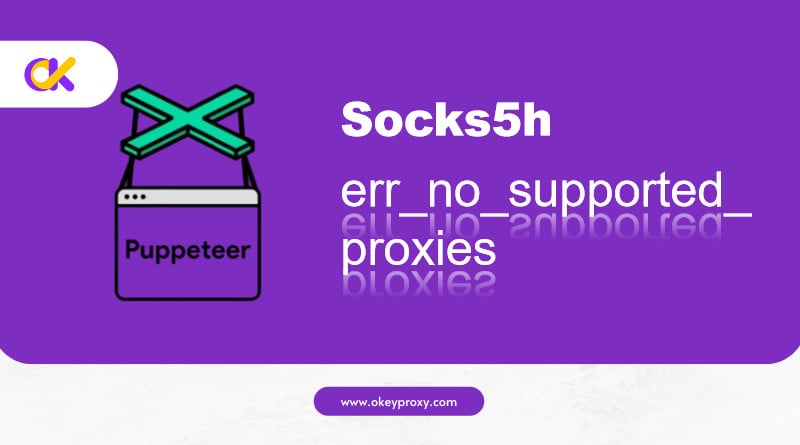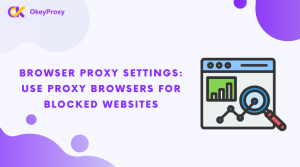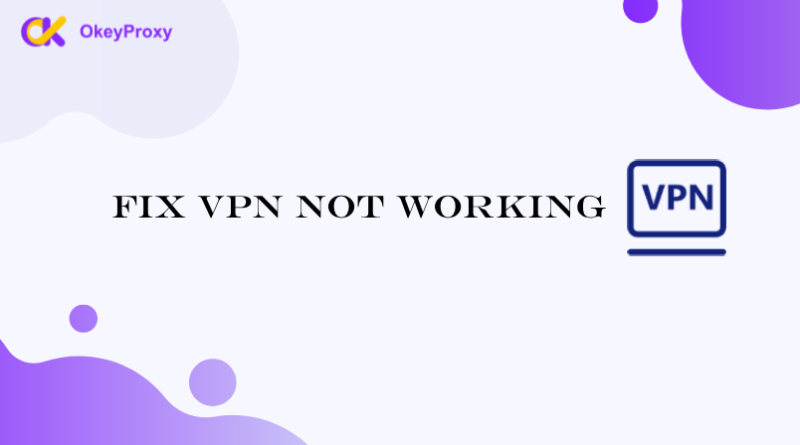When working with Puppeteer, a powerful Node.js library used for browser automation, users might encounter various errors while trying to configure proxy settings. One of the more specific errors is ERR_NO_SUPPORTED_PROXIES, especially when using the socks5h protocol. This blog aims to break down the error, explain its causes, and offer a solution to overcome the issue.
What is Puppeteer?
Puppeteer is widely used for browser automation, web scraping, and testing web applications. It provides a headless version of Chrome (or Chromium) and allows users to script actions within a browser environment using JavaScript. One of its key functionalities includes the ability to configure network settings, including proxies, making it a popular choice for those looking to automate scraping tasks behind proxies.
What is SOCKS5 and SOCKS5H?
Before diving into the error, it’s important to understand the differences between SOCKS5 and SOCKS5H:
- SOCKS5 is a versatile proxy protocol that allows for the transmission of data over a TCP connection. It supports a wide range of applications, including browsing, email, and P2P transfers.
- SOCKS5H (SOCKS5 with hostname resolution) extends SOCKS5 by resolving DNS queries on the proxy server rather than on the local machine. This added layer of privacy ensures that DNS requests do not leak, making socks5h the preferred choice for certain security-conscious users.
Why Does the ERR_NO_SUPPORTED_PROXIES Error Occur?
The error ERR_NO_SUPPORTED_PROXIES arises when Puppeteer fails to properly configure and connect to a specified proxy. This can often happen when users attempt to use the socks5h protocol with Puppeteer.
Several factors could lead to this error:
Unsupported Proxy Protocol: Puppeteer natively supports certain types of proxies but may have issues with others, like socks5h. If the proxy protocol is unsupported, Puppeteer will throw the ERR_NO_SUPPORTED_PROXIES error.
Misconfigured Proxy Settings: Incorrectly set proxy configuration or providing an invalid proxy URL might lead to this error.
DNS Resolution Conflicts: Since socks5h resolves DNS queries on the proxy server, any issues with DNS resolution or the proxy server itself could trigger the error.
Outdated Puppeteer Version: Older versions of Puppeteer may not fully support advanced proxy configurations, including SOCKS5 or SOCKS5H.
How to Fix ‘ERR_NO_SUPPORTED_PROXIES’ in Puppeteer
Here’s a step-by-step guide on how to troubleshoot and resolve this error:
Step 1. Verify the Proxy Protocol Support
While socks5h provides DNS leak protection, Puppeteer does not natively support the socks5h protocol, but it does support socks5. You can start by checking the Puppeteer documentation for proxy support. Switching to SOCKS5 can solve the problem of ‘puppeteer’ ‘err_no_supported_proxies’ ‘socks5h’ in most cases. Here’s an example of how to set up Puppeteer with a SOCKS5 proxy:
const browser = await puppeteer.launch({
args: ['--proxy-server=socks5://‘proxy-host’:‘proxy-port’']
});If your project requires socks5h due to DNS resolution concerns, you might consider using a proxy management plugin (explained in the next step).
Step 2. Upgrade Puppeteer to the Latest Version
Ensure that the Puppeteer version you’re using is up-to-date. Newer versions often introduce fixes and new features, including improved proxy support. To update Puppeteer:
npm install puppeteer@latestStep 3. Use Puppeteer Extra with Proxy Plugin
If socks5h is a must-have for your project, consider using the puppeteer-extra-plugin-proxy plugin. This plugin extends Puppeteer’s proxy capabilities and supports more advanced proxy configurations, including socks5h.
npm install puppeteer-extra puppeteer-extra-plugin-proxyThen, in your Puppeteer script:
const puppeteer = require('puppeteer-extra');
const pluginProxy = require('puppeteer-extra-plugin-proxy');
puppeteer.use(pluginProxy({
proxyUrl: 'socks5h://‘proxy-host’:‘proxy-port’'
}));
puppeteer.launch().then(async browser => {
const page = await browser.newPage();
await page.goto('https://example.com');
await browser.close();
});This setup allows Puppeteer to use the socks5h protocol while bypassing ERR_NO_SUPPORTED_PROXIES.
Step 4. Check Proxy Server Settings
Lastly, it is important to verify the correctness of the proxy server settings. Ensure that the proxy server supports socks5h and that there are no restrictions that could prevent Puppeteer from connecting.
Step 5. Choose Proxies with DNS Resolution Support
When working with Puppeteer and proxies, the choice of proxy provider plays a critical role in avoiding errors like ERR_NO_SUPPORTED_PROXIES. If socks5h isn’t a strict requirement but DNS leak prevention is, consider using high-quality proxy services that handle DNS resolution securely. For this, OkeyProxy offers robust proxy solutions that handle SOCKS5 protocols, sending an ideal choice for Puppeteer projects.
With OkeyProxy, users benefit from:
- High Speed and Stability: Reliable proxy connections ensure that web scraping or automation tasks proceed smoothly without interruptions.
- SOCKS5 Support: OkeyProxy fully supports the SOCKS5 protocol, making it a seamless fit for Puppeteer configurations.
- Global Coverage: With a vast network of proxy servers worldwide, OkeyProxy ensures optimal performance, regardless of location.

For those seeking the balance of performance, privacy, and compatibility, OkeyProxy is a top-tier choice for integrating proxies with Puppeteer. The added benefit of DNS resolution and advanced proxy options ensures secure and anonymous web browsing or automation.
Register and Contact the OkeyProxy Team to Get a 1GB Free Trial!
Conclusion
The ERR_NO_SUPPORTED_PROXIES error in Puppeteer often stems from using unsupported proxy protocols like socks5h. By verifying proxy settings, updating Puppeteer to the latest version, or incorporating plugins like puppeteer-extra-plugin-proxy, this issue can be effectively resolved. Additionally, choosing a reliable proxy provider like OkeyProxy can ensure smooth and secure browser automation workflows with Puppeteer.
Embracing these troubleshooting tips will allow Puppeteer users to bypass proxy-related errors and achieve success in their automation projects.


![How to Use Hide me Web Proxy [Hide.me Proxy Guide] hide me proxy](https://www.okeyproxy.com/wp-content/uploads/2024/10/hide-me-proxy-500x278.jpg)








